
Cooking is an art that requires not just skills but fresh ingredients. The flavor and aroma that come from spices can create magic in your cooking. Spices have been an integral part of human life for centuries. The use of spices in cooking can enrich the taste of any dish, making it irresistible. In this article, we will explore more about spices for cooking and how to use them.
Cinnamon
Cinnamon is a spice that is harvested from the inner bark of trees belonging to the Cinnamomum family. This spice has been popular for centuries for its warm and sweet flavor, and it is widely used in cooking and baking around the world. Here are some characteristics of cinnamon:
- Cinnamon has a distinct aroma that is both sweet and spicy.
- The color of cinnamon varies from light brown to deep red, depending on the type of cinnamon and how it was harvested.
- There are two main types of cinnamon: Ceylon cinnamon, which is considered the “true” cinnamon, and Cassia cinnamon, which is more commonly used in cooking.
Culinary uses and pairing suggestions
- Cinnamon is a versatile spice that can be used in both sweet and savory dishes.
- It is commonly used in baked goods such as cinnamon rolls, cakes, and cookies.
- Cinnamon is also added to savory dishes like stews, soups, and roasted meats to add a subtle sweetness that balances out the other flavors.
- Pair cinnamon with other warm spices like ginger, nutmeg, and cloves for a comforting blend of flavors.
Health benefits
Cinnamon is known for its antioxidant and anti-inflammatory properties, which can help lower the risk of chronic diseases such as heart disease, diabetes, and cancer. It may also help lower blood sugar levels and improve insulin sensitivity, making it a great spice for people with diabetes. Cinnamon is a good source of manganese, fiber, and calcium.
Turmeric
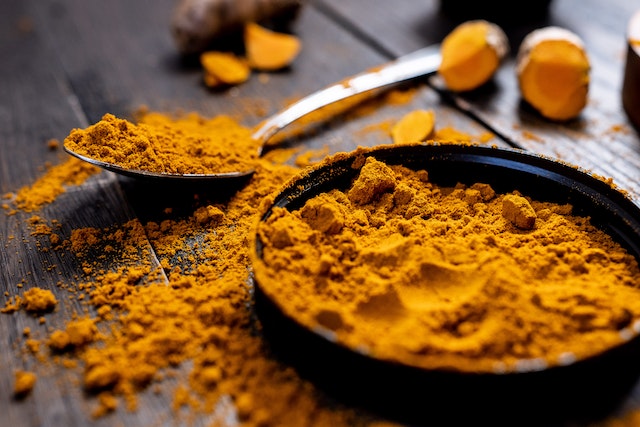
Turmeric is a spice that is commonly used in Indian and Southeast Asian cuisine. It is often recognized for its bright yellow color and earthy, slightly bitter taste. Here is everything you need to know about turmeric:
- Turmeric is derived from the root of the Curcuma longa plant and is most commonly used in powder form.
- The spice has a warm and slightly bitter taste and a bright yellow-orange color.
- Turmeric has been used for centuries in Ayurvedic and Traditional Chinese Medicine for its healing properties.
Culinary uses and pairing suggestions
- Turmeric is widely used in curries, soups, stews, and rice dishes.
- The spice pairs well with other spices like cumin, coriander, and ginger.
- Turmeric can also be used to add color and flavor to marinades, salad dressings, and roasted vegetables.
Health benefits
Turmeric is one of the most popular spices for its anti-inflammatory properties, which can help reduce inflammation and alleviate pain. Curcumin, the active compound in turmeric, has been linked to improved brain function and a reduced risk of heart disease. Turmeric is also a good source of manganese, iron, and Vitamin B6. Incorporating turmeric into your meals is an easy way to add both flavor and nutrition to your diet. This spice is versatile and can be used in a variety of dishes, making it a pantry staple for any home cook.
Cumin
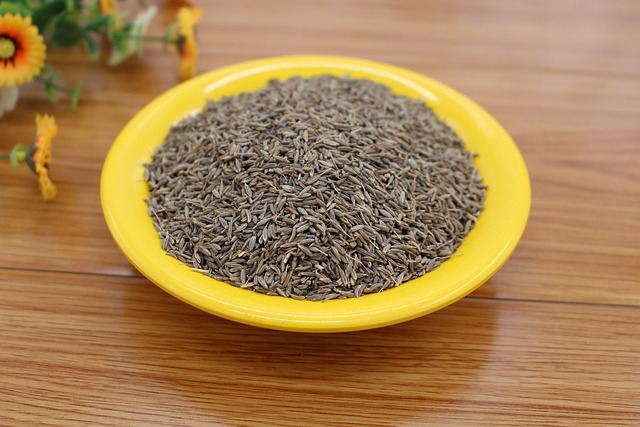
Cumin is a spice that is widely used in Middle Eastern and Indian cuisine. It is known for its warm, earthy, and nutty flavor that can add depth and complexity to any dish. Here is everything you need to know about cumin:
- Cumin is derived from the seeds of the Cuminum cyminum plant and is available in whole or ground form.
- The spice has a distinctive aroma that is earthy, nutty, and slightly bitter in taste.
- Cumin seeds are small, elongated, and brown in color with a slightly curved shape.
Culinary uses and pairing suggestions
- Cumin is commonly used in spice blends like curry powder, garam masala, and taco seasoning.
- It is added to dishes with lentils, beans, and rice to enhance their flavor.
- Cumin is a great addition to meat dishes like chili, lamb, and beef, as it pairs well with their strong flavors.
- It pairs well with other warm spices like cinnamon, coriander, and cardamom.
Health benefits
Cumin is rich in antioxidants, which can help fight against inflammation and improve overall health. It is a good source of iron, which helps transport oxygen throughout the body and prevents anemia. Cumin also has antimicrobial properties that can help prevent foodborne illnesses.
Incorporating cumin into your cooking is an easy way to add flavor and nutrition to your meals. It pairs well with a variety of spices and dishes and offers numerous health benefits.
Paprika
Paprika is a spice that is made from dried and ground peppers. It is widely used in Spanish, Hungarian, and Turkish cuisine and is known for its bright color and rich flavor. Here is everything you need to know about paprika:
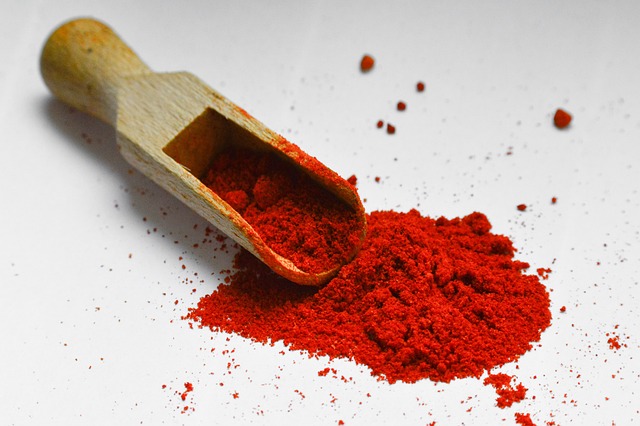
- Paprika comes in different varieties, including sweet, hot, and smoked.
- The color of paprika can range from bright red to deep brown, depending on the type and how it was processed.
- The flavor of paprika can vary from mild and sweet to pungent and smoky.
Culinary uses and pairing suggestions
- Paprika is a versatile spice that can be used in marinades, rubs, dressings, and sauces.
- It is commonly used in dishes like paella, goulash, and deviled eggs.
- Pair paprika with other spices like cumin and coriander for a flavorful blend of flavors.
- Smoked paprika pairs well with roasted meats and vegetables.
Health benefits
Paprika is a good source of vitamin A, which is essential for immune function and eye health. It also contains antioxidants that can help reduce inflammation and lower the risk of chronic diseases. Hot paprika contains capsaicin, which has been shown to boost metabolism and promote weight loss. Paprika is also low in calories and fat, making it a great addition to any diet.
Incorporating paprika into your meals is an easy way to add color and flavor to your dishes. Its versatility and health benefits make it a must-have spice in any kitchen. Try experimenting with different types and pairing suggestions to find your favorite way of using paprika in your cooking.
Lesser-Known Spices: Exploring Unique Flavors
In addition to the well-known spices like cinnamon and cumin, there are many lesser-known spices that can add unique and exciting flavors to your cooking. Here are some of our favorite lesser-known spices and how to use them:
Sumac
Sumac is a spice that comes from the dried berries of the sumac plant. It has a tangy, lemony flavor and a deep red color.
Culinary uses and pairing suggestions: Sumac is commonly used in Middle Eastern and Mediterranean cuisine to add flavor to dishes like salads, meats, and dips. It pairs well with other spices like cumin, coriander, and paprika.
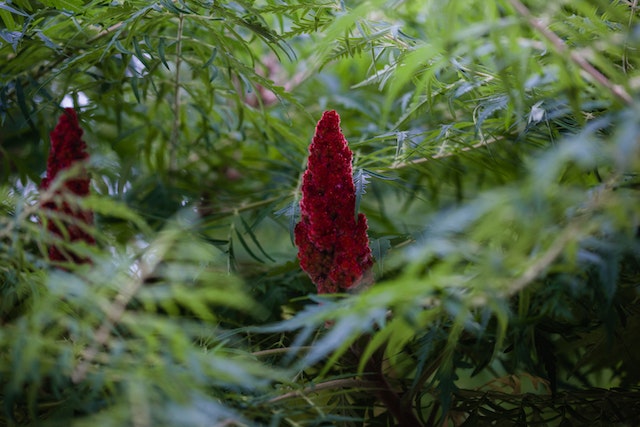
Health benefits: Sumac is rich in antioxidants and has anti-inflammatory properties. It is also a good source of vitamin C.
Fenugreek
Fenugreek is a spice that comes from the seeds of the fenugreek plant. It has a slightly sweet, nutty flavor and a deep green color.
Culinary uses and pairing suggestions: Fenugreek is commonly used in Indian and Middle Eastern cuisine to add flavor to dishes like curries and stews. It pairs well with other warm spices like cumin, coriander, and cardamom.
Health benefits: Fenugreek has been shown to help regulate blood sugar levels and improve digestion. It is also a good source of protein, fiber, and iron.
Saffron
Saffron is a spice that comes from the stigma of the saffron crocus flower. It has a distinct, floral flavor and a deep orange color.
Culinary uses and pairing suggestions: Saffron is commonly used in Spanish, Middle Eastern, and Indian cuisine to add flavor and color to dishes like paella, biryani, and risotto. It pairs well with seafood, rice, and chicken.
Health benefits: Saffron has antioxidant and anti-inflammatory properties and may help improve mood and reduce symptoms of depression. It is also high in carotenoids, which are important for eye health.
Star Anise
Star anise is a spice that comes from the seed pods of the Chinese star anise tree. It has a licorice-like flavor and a distinct, star-shaped appearance.
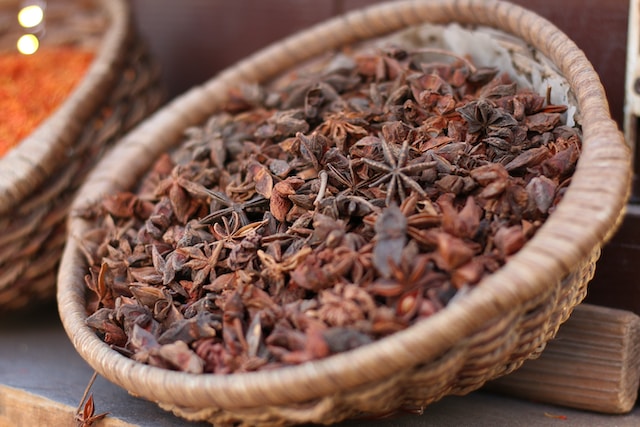
Culinary uses and pairing suggestions: Star anise is commonly used in Asian cuisine to add flavor to dishes like soups, stews, and marinades. It pairs well with cinnamon, ginger, and fennel.
Health benefits: Star anise has been shown to have antimicrobial and anti-inflammatory properties. It is also a good source of antioxidants.
Tips for Using and Storing Spices
1. Buy in small quantities: It’s best to buy spices in small quantities to ensure their freshness. Spices lose their flavor over time, so it’s better to use them up before they expire.
2. Store in an airtight container: Store spices in an airtight container in a cool, dry place away from direct sunlight and heat. Moisture and sunlight can cause spices to lose their flavor and aroma quickly.
3. Label and date your spices: To keep track of their freshness, label and date your spices. This way, you’ll know if it’s time to replace them.
4. Don’t store them near the stove: Storing spices near the stove is not recommended, as the heat and moisture can cause them to spoil quickly.
Proper usage techniques
Whole spices
Whole spices have a longer shelf life compared to ground spices and retain their flavor for a more extended period. Toasting whole spices before grinding releases their oils and enhances their flavor. They are commonly used in simmering dishes like stews and soups.
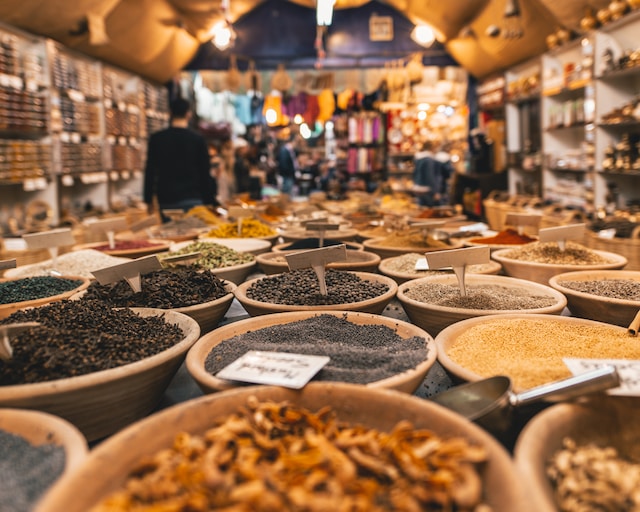
Ground spices
Ground spices are more convenient to use but lose their flavor and aroma quickly. It’s better to ground them in small batches as needed. They are commonly used in baking and quick-cooking dishes like stir-frys and curries.
Creating spice blends and infusing flavors in dishes
Spice blends
Experiment with different spice blends to create unique flavors in your dishes. Examples of popular spice blends include garam masala, curry powder, and za’atar.
Infuse flavors
Infuse your dishes with flavor by adding spices to your cooking oils or broth. For example, infusing your olive oil with thyme and garlic can create a delicious base for a salad dressing or marinade. Adding cinnamon sticks to your hot chocolate or mulled wine can create a comforting winter beverage.
The use of spices in cooking goes beyond adding flavor and aroma to dishes. Spices offer a host of health benefits and can be used to infuse unique flavors to meals. Whether you’re a seasoned chef or just starting on your culinary journey, experimenting with different spices can take your cooking to the next level. Remember to store your spices properly and use them with care to get the best results. With these tips, you can master the art of cooking with spices and create delicious and unforgettable dishes.
